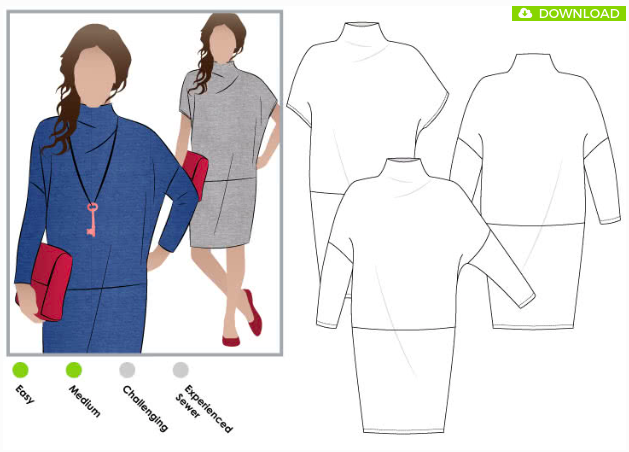Here’s my review of the 6th episode of this season’s Great British Sewing Bee, aired on the 27th of May 2020.
Below is the link to my YouTube review, with links below to the patterns that I found for this week.
***Spoiler Alert – I reveal the Garment of the week & the person who was eliminated***
This weeks theme is Reduce, Reuse & Recycle. As most of the fabrics have been repurposed from 2nd hand clothing I won’t be able to look at the fabrics used.
We have enough clothing on the planet right now to clothe the next 6 generations of the human race: we have to find ways of using what we’ve got.
Patrick Grant GBSB
Round 1: Technical Challenge – Bomber Jacket
The contestants had 4.5 hours to make a bomber jacket with ribbed cuffs, collar & waistband, an open ended zip & patch pockets, using up to 4 items of 2nd hand women’s garments. While I think that a bomber jacket is slightly less difficult than last weeks basque in terms of construction, I think the real challenge came from trying to find fabrics that not only coordinated with each other & had similar qualities & weights along with finding pieces that were large enough for the pattern pieces. We did see some of the contestants use some of the existing construction details in their new garment, which made it interesting. This could be a great way of turning something old & unloved into something new & exciting (Patricks words, not mine!).
Patterns
I’m pretty sure that the contestants used the pattern from the new Great British Sewing Bee book – Sustainable style. There are are 2 variations in the book, the full length with patch pockets, that was used in the show along with a cropped version. If you own the GBSB Sew Your Own Wardrobe book, there is also an anorak in there which is a very simple bomber jacket style, without pockets. This has raglan sleeves, whereas the other has a set in sleeve, with a dropped shoulder but both have the tabs at the bottom of the waistband. I’m pretty sure that this was also used in one of the old series as they were making it waterproof with the use of heat seal tape.
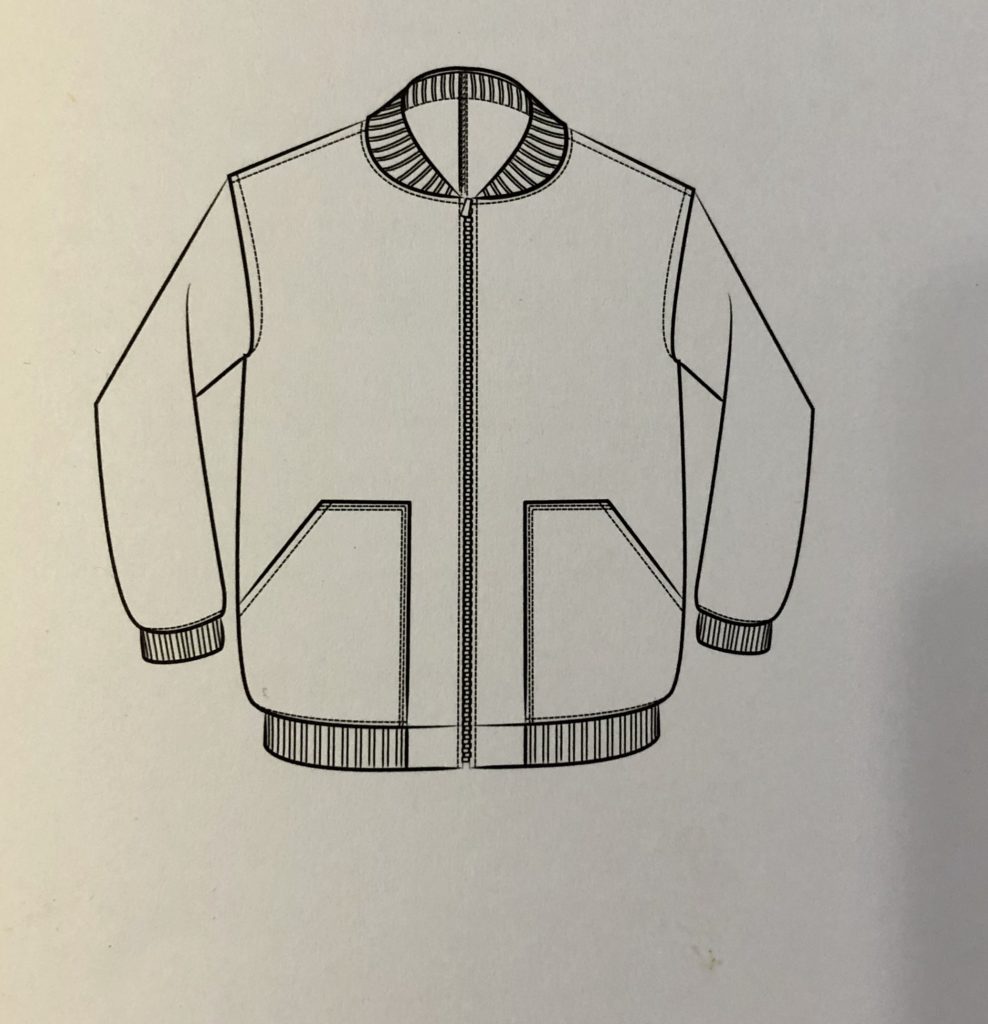
Bomber Jacket from GBSB Sustainable Style Book 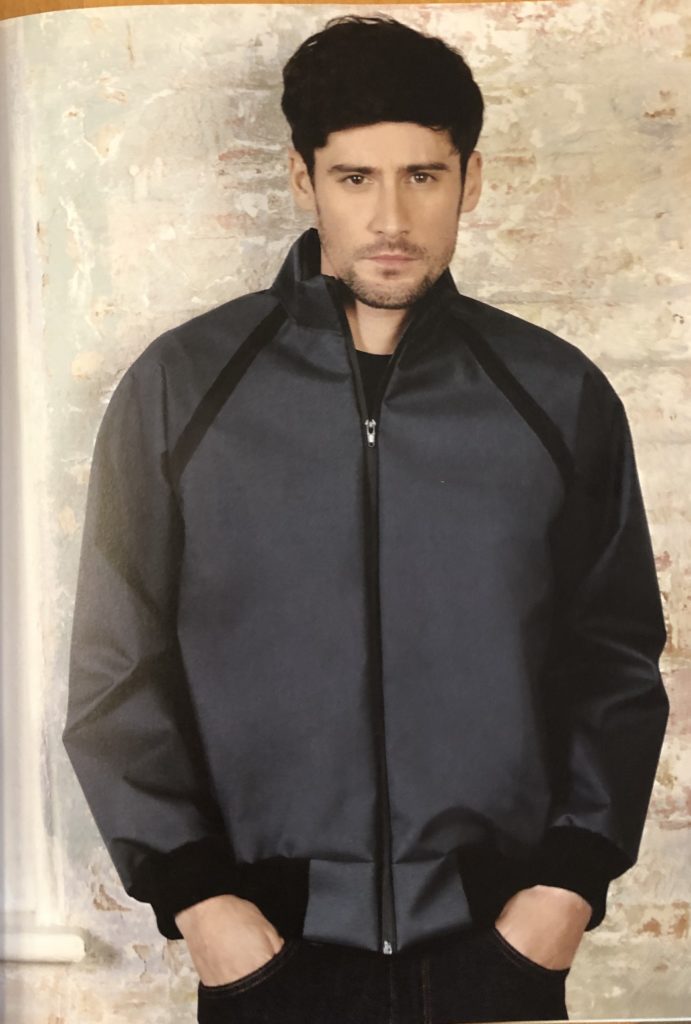
Anorak from GBSB Sew Your Own Wardrobe Book
I’ve also found a couple of free bomber jacket patterns if you don’t own either of the books: Mood Patterns Avelia Bomber jacket which has been made in a sheerling fleece & velvet or boiled wool/faux fur on the site but I imagine it could be made with just about anything.There is also free satin bomber jacket available from Sew magazine, which unusually, has the construction details on the website.
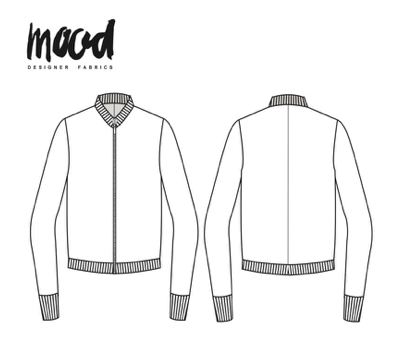
Mood Patterns – Avelia Bomber 
Sew Magazine – Satin Bomber
I also own the Jalie – Charlie bomber – which I won in a competition last year & have never got around to making. This jacket is suitable for stable knits or stretch woven & has zipper at front, ribbing collar, cuffs and waistband. The tabs at the front are very similar to the pattern used on the programme but I think this may be a little bit more challenging as it is lined & has welt as opposed to patch pockets. There are lots more options for bomber jacket patterns available from the independent designers & the big 4.
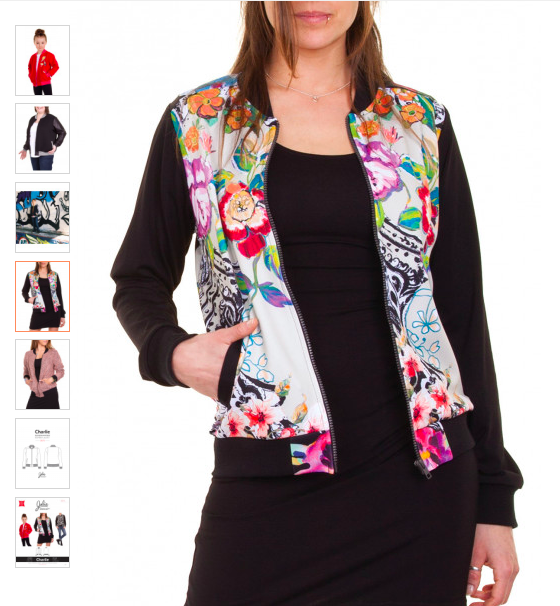
What They Made
Here’s a brief overview of what the contestants made along with how they were ranked.
Matt Chose mustard & rust colours. He left elements of the previous garment in his, such as a dart & a zip pocket, which the judges loved, why throw these elements away, embrace them & include in your project. He stretched out the bottom of the ribbing & his collar didn’t meet. 5th
Mark used a blue/green colour palette. Patrick said it was clashy but hangs together, it was beautifully sewn & well made with great choice of fabrics .1st
Peter had made bomber jackets before. He used crepe & jersey in bold yellow & white floral with orange leopard print sleeves & blue birds for pockets. His collar didn’t meet in the middle. The judges liked his fabric choices but he messed up around the neck as the collar didn’t meet & was stretched out. 7th
Therese used elements of a Kimono & a dress, placing a large dragon motif on the back which was echoed with the pockets at the front. Her collar was ok the front but had a bit of gathering in the back. 4th
Nicole Used a bold red dashiki at the front, along with some bold geometric prints & had blue sleeves. Judges loved fabrics but collar didn’t fit & let her down. 6th
Liz needed to piece her fabric together & made a front yoke using a red fabric & used elements of a blue chambray shirt in the project but missed her opportunity to have a scratch flap but sewing up the button placket that she had left in at the front! 3rd
Clare used solid blues & teal along with polka dots & shibori. She brought the disparate elements together with red in the zip, collar & ribbing. She was praised for her neat topstitching & well sewn collar, fabulous choice of fabrics & beautiful sewing. Esme felt it was very chic but she honestly replied she would wear it only after gin or 2! 2nd
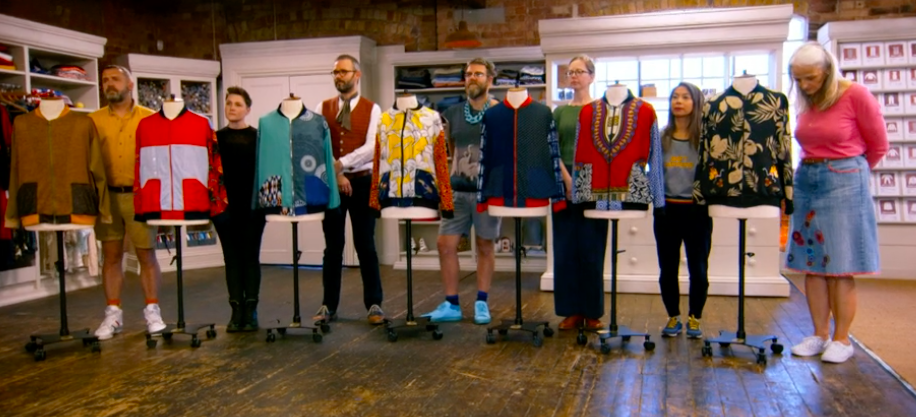
Round 2 Transformation Challenge
Laundry Bags to Glad Rags – The contestants had 90 minutes to transform 3 laundry bags into a garment for a man or a woman. The bags were made from woven recycled plastic, which holds it’s shape well & features large checks. The judges were looking for impact, drama & exciting silhouettes. They could take anything from the haberdashery but no other fabric. I think that the contestants perhaps thought that they were getting offcuts from their previous projects like they did last year. Clare’s face was a picture! I think that this challenge was perhaps inspired by the Celine collection on the catwalk which recreated the look of the bags on other fabrics

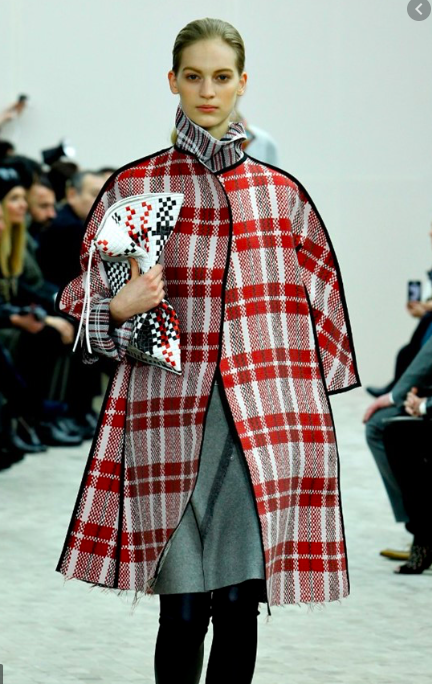
Celine Fall/Winter 2013 
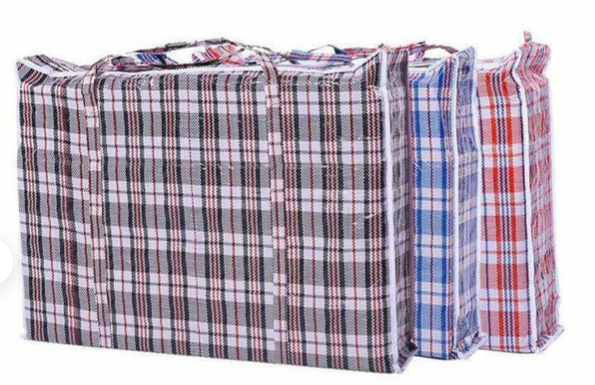
Laundry Bags
Matt made a “Trashy” Wedding dress. He constructed a strapless sheath dress & then added a train with feathers around the edge. He used the original handles to make criss cross ties at the back. The judges appreciated how much work went in to the darts to shape & fit the dress. While Esme thought the dress was dramatic, Patrick didn’t love the red feather trim. 7th
Mark made a man’s trench coat with lapels & a belt, he kept sewing until the time ran out, adding a poacher pocket with a pocket flap. The judges didn’t feel that it was interesting or sculptural enough. It was ambitious but not imaginative enough 6th
Peter Used layers of ruching, with an asymmetric zip at the back. The judges loved the drama of this & felt it encapsulated everything that they wanted from the challenge 1st
Therese draped her bags onto the mannequin, which she described as being like paper folding. She then handstitiched them into place & then machine stitched.The judges said that it fitted the brief because she used the structural quality of the fabric to create a dramatic shape, they also liked that she had used the zips as straps. 2nd
Nicole Whipped up a raincoat in no time & had time to add more details with an Obi style belt & patch pockets. She remarked how difficult the bags were to sew with. Judges thought it was brave & bold & that she had thought about colours & placement. 4th
Liz made a ‘Crazy mental puffball skirt’, (her words), with a zip up the back which she pulled the tab off & had to insert a non-functioning zip, with a long unsewn tail. The judges felt it was elegant & dramatic, not as dramatic & grand as some of the others but very successful. 3rd
Clare Used trapezoids for the top of her skirt, which had a zip & an elastic waistband to get it on & off. The judges said that she had used the structural qualities of the fabric but that it was too neat & that there needed to be something more dynamic about it! 5th
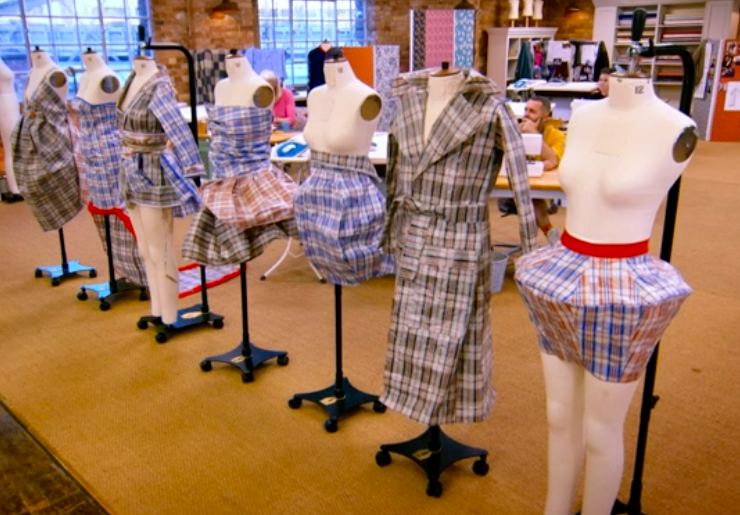
Round 3: Made to Measure
This challenge was unlike any made to measure they had been given before, they had 5 hours to make a winter dress from any recycled knitwear, such as jumpers & cardigans. It was a good way to demonstrate how worn out knitwear could be given a 2nd lease of life, simply by considering the garments as fabric. The judges were looking for something chic & elegant, Esme was wanting to see something that she wouldn’t expect. It would have been quite difficult to practice the design at home & a couple mentioned that theirs had been self drafted or enjoyed the iterative process of just seeing where the design took them. The judges did remark that those who were following a specific pattern seemed to be finishing theirs better.
Mark made his own pattern/design from a prototype that he had made at home. It was a very simple jumper design not unlike Nina Lees Southbank Sweater. He kept it simple by only using 3 different jumpers plus one of his from childhood with paino keys to make the cowl neck. The judges liked the colour combinations but felt that some of his seams were a little bit wobbly.
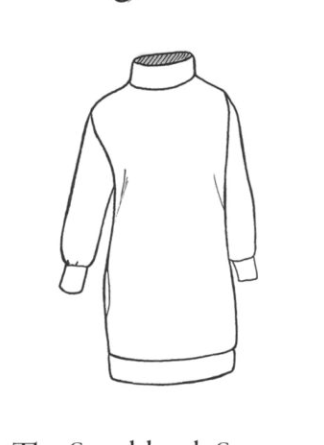
Matt Used one of his mum’s jumpers for the main body adding other colourful charity shop finds in panels to the bottom, with sparkly collar & cuffs & an uneven hem. It was an elaborate design that his partner had drawn, so no pattern was used. Patrick declared it a celebration of jumpers past with a Snow Queen vibe, as he had used different elements & textures. You could replicate this by using something like the Southbank sweater above or any sweater dress pattern, such as the 2 from McCalls below, as a starting point & then just keep adding panels until you’re happy with the results.
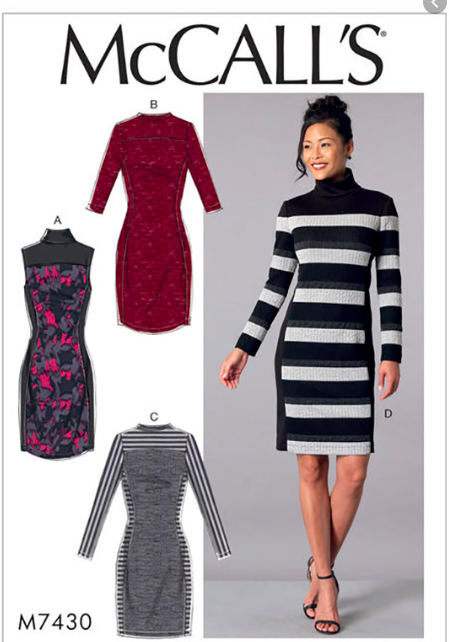
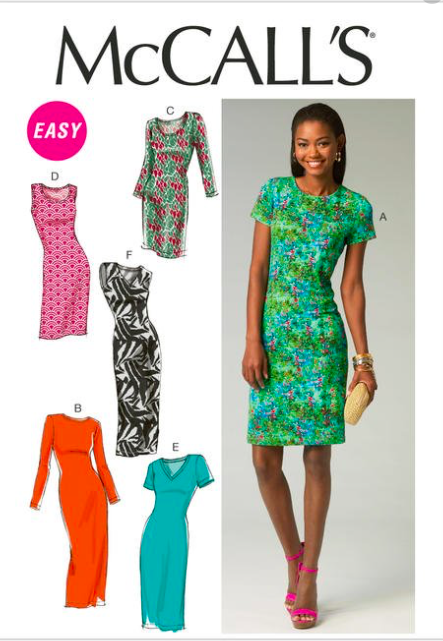
McCalls M6886
Peter made a ‘Wicked Witch Winter dress’ made with knitwear bought from charity shops & was regarding this as a 5 hour transformation challenge. He started with fitting the bodice to the model using draping techniques & then improvised by adding to it. The dress had a huge cape like hood & a layered skirt, he decided to leave the sleeves unsewn, as he thought it looked better. Interestingly Patrick said how he had done some fantastic transformation challenges but the finish for those were unimportant whereas the finish had let him down for this, (he had 5 hours remember), & Esme felt that he had a lot of capes going on & that the hood was more of a cape. The judges felt that it wasn’t executed well & didn’t really fit the model very well either but I think the fact that it looked more fancy dress than wearable garment was the nail in the coffin!
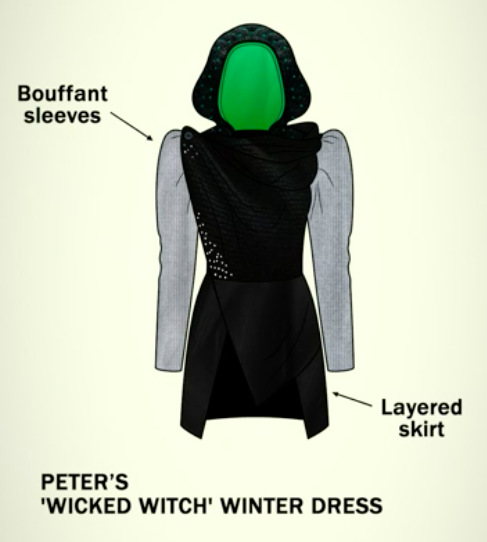
Therese talked about using a jumper dress that she had shrunk at the beginning but I couldn’t see it in the final dress. She didn’t have a definite plan at the start & didn’t use a pattern & kept changing her mind either by design or accident. She cut up a jumper & was going to use the shoulder seam across the front bodice but ended up accidentally sewing the sleeves back together, telling Patrick that it fitted better, Patrick was sceptical, saying it was less dramatic.You can’t pull the wool over this lads eyes! She then unpicked it all & went back to her original plan but omitted the batwings, saying it didn’t suit the model. In the end I think her indecision let her down & she ended up with something that wasn’t interesting enough for the judges. Patrick said that it had some interesting features & while it wasn’t bad he it was more interesting 4 hours before.
Nicole Made a ‘Stripy Puzzle dress” using the Stylearc Cher dress pattern, which is a cocoon shape & divided the panels into 9 pieces on the front & another 9 on the back. She used blue & bright yellow & played with stripes. She said that she hadn’t practised this before, so was taking a risk by sewing it for the first time on the show. She was very pernickety with her stripe matching but was it knitwear she used or stretch such as Ponte? The judges said it was very well executed & very chic & easy to wear with fabulous shape with beautiful seaming. Patrick declared it one of the best things that he’d seen on the Sewing Bee, whereas Esme felt it looked a bit hight street!
Liz Used some of her daughters school uniform cardigan & kept elements such as the v neck in. She had to piece the fabric & gave it a chevron effect. The judges felt that it was elegant & well balanced & the chevrons were well done. I’m pretty sure that she used the Sew Over it Heather dress as a pattern. I’ve made this dress several times & it’s one of my favourite winter dress patterns, the pocket shape was the giveaway! I think that both hers & Clares were the most complex patterns
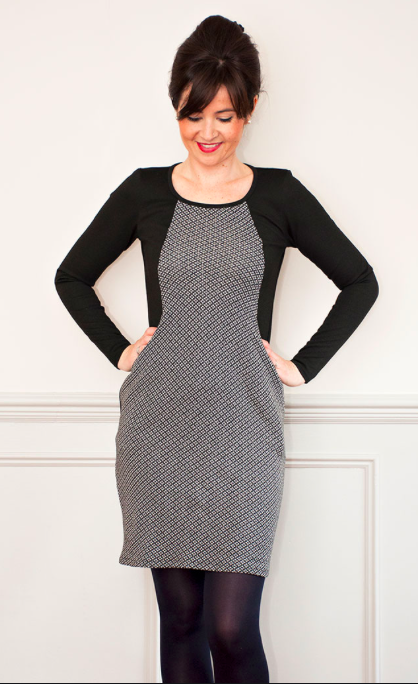
Sew Over It Heather Drees 
Wearing one of my many Heathers, when I met Janet Poole from last seasons GBSB
Clare made a puffin inspired dress. The skirt of it was very similar to this 1925 Zig-Zag dress form Decades of Style which has 8 gores & is designed for woven but the bodice & neckline are different. I suspect that the bodice was an unaltered jumper & the neck tie was a separate piece. She spent a lot of time ensuring her points were right & achieved a very strong, graphic dress with the black background & primary colours. Esme pointed out that although her peaks were very neat some of her troughs were wobbly. I thought that she achieved a very wearable dress with a great fit

Puffin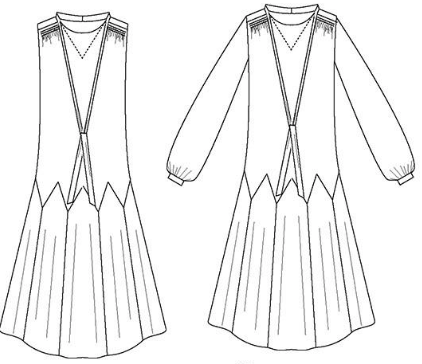
Decades of Style 1925 dress
The Result
This is the first time that I can recall the judges were unable to agree on a garment of the week. Esme preferred Matts’ & Patrick loved Nicole’s for it’s execution & clever use of fabric, which Esme declared to be more high street. While she thought that Matt’s was exciting, imaginative & original, so they both won garment of the week. Sadly Peter went from hero to zero this week, having done really well in the upcycle challenge he failed to impress with his bomber jacket & his made to measure garment. I think it was a close call between him & Therese this week. He certainly brought us some imaginative garments & stated that making clothes is what he wanted to do.
Patterns suitable for using upcycled fabric
A few patterns lend themselves quite well for using either upcyled fabric or small remnants/off cuts from other projects & I’ve written about it previously here. The one that I was wearing in the video, the Everyday Essential Denim Dress is ideal for this & was originally a free pattern from Sew Different. It was only one size when it was free, (it’s £9 now but multi-sized) but there are a few other free patterns on her site, including the 2 hour top, which could be used as a base for piecing fabrics in, along with a tutorial about choosing fabrics for colour blocking.

Everyday Denim Dress out in the wild! 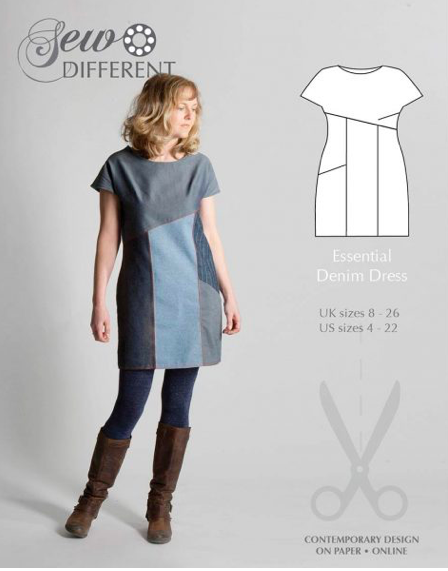
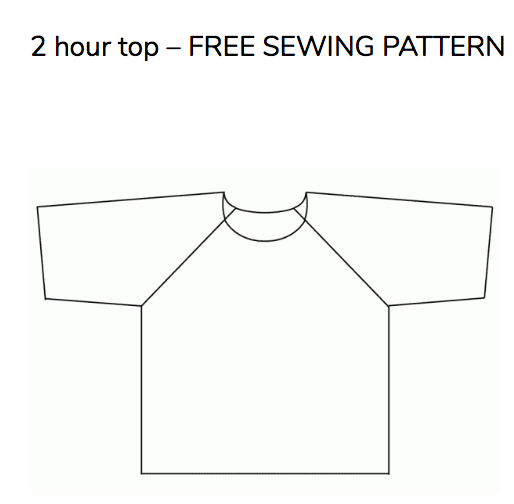
Free 2 hour top – Sew Different
The montavilla top is also another good one, I managed to squeeze the top out of an upcycled skirt, as a lot of the pieces are small, (blogpost in link). I also used a maxi dress that I had bought at a car boot sale to make the Named Saraste top, which again, has a lot of small pieces. Both of these patterns would be good for colour blocking, if that’s what you like to do or you don’t have enough of one fabric.
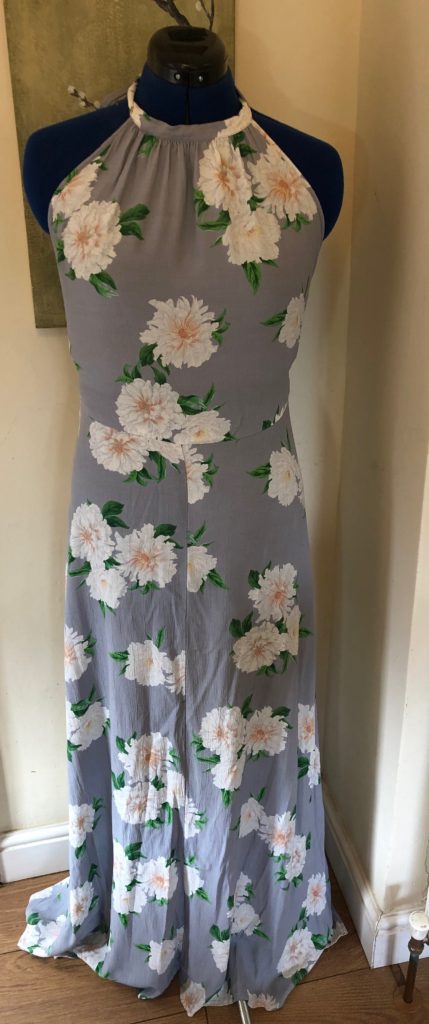
Original dress 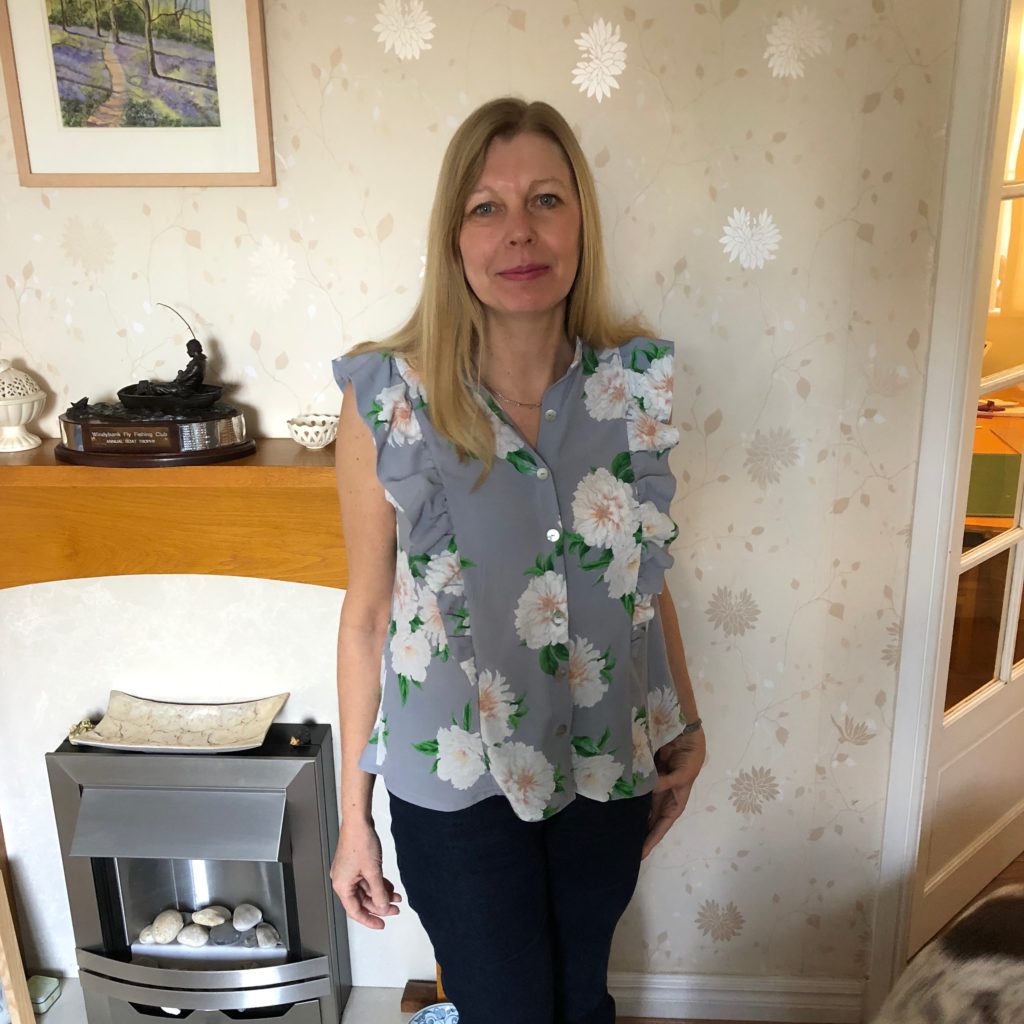
Named Saraste
Hints for Sewing with Knitwear
Since the last challenge was using old jumpers & cardigans, I thought I’d just add a couple of hints & tips for sewing with knitwear in general. While it’s not difficult to work with these ideas may help stop the fabric from stretching out or unravelling as you are sewing.
- A walking foot will help with feeding the fabric through evenly.
- Knitwear can be quite stretchy, each one will behave differently, so handle with care & don’t pull at it.
- Overlock or zig zag cut edges to stop cut edges from fraying further.
- You can use a stabiliser on shoulder seams & bias cut seams to stop them from stretching out of shape.
- We saw Liz using quilting clips, these are useful for thicker or difficult to pin fabrics as they don’t distort the fabric.
- Johanna @ The Last Stitch has some advise about calculating the stretch in ribbing.
- Tilly & The Buttons Stretch book has some useful advice.
My Challenge A bomber Jacket
Every week I’ve been challenging myself to make something inspired by the Sewing Bee, made with patterns & fabric that I already own. As much as I love the Sew Over It Heather dress, I’ve already made 4 & it seemed a bit unseasonal to make another, (we’ve been having some lovely sunshine in Yorkshire this year). If you’ve watched the video, you will know my views on upcycyling laundry bags! So that leaves the bomber jacket. The Jalie Charlie bomber jacket was actually on my Autumn/Winter edition make 9 plans, so I’ve cheated a bit & used the one from the GBSB Sustainable Style book. I decided to make the cropped version & will do a full review of it in another blog post but here’s a sneaky peak of it in the meantime.
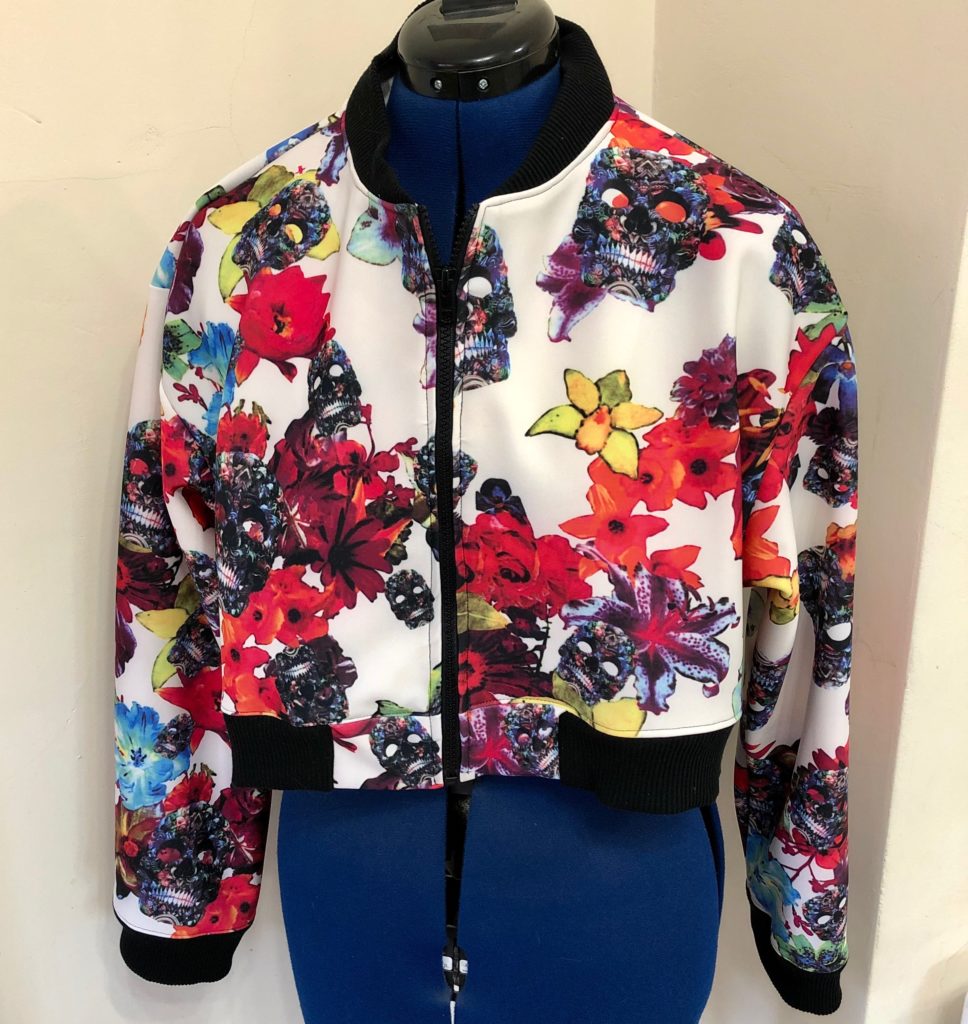
Bomber Jacket from GBSB Sustainable Style 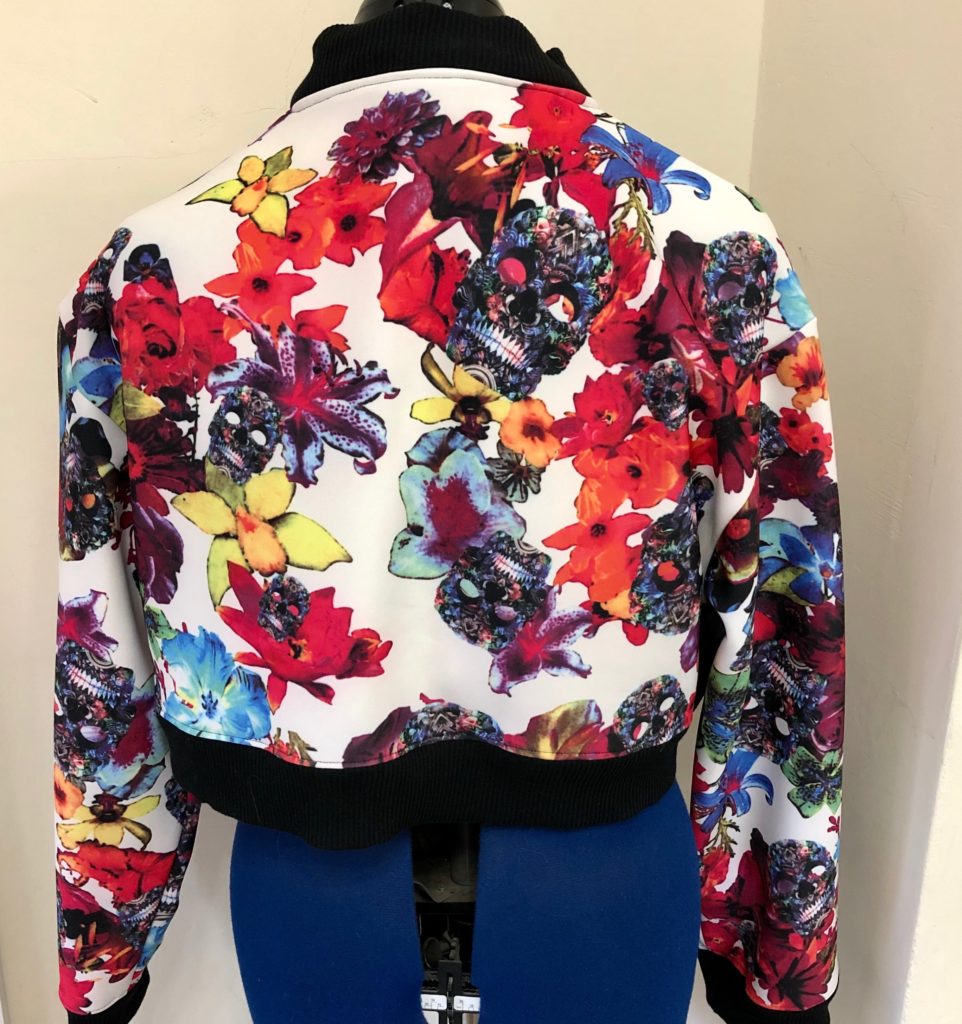
Back view
And Finally…
So that’s it for the Reduce, Reuse Recycle week, let me know below if you enjoy upcycling garments & if you have any pattern recommendations, there must be lots but I felt I’d gone on long enough but maybe I’ll do a future blog & gather all the information together. Next week will be 1980s with cocktail dresses for the made to measure & transformation of high vis workwear!

